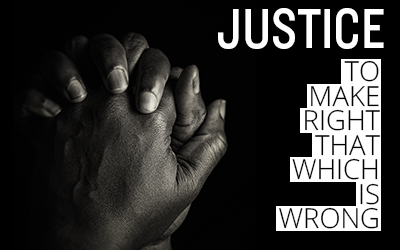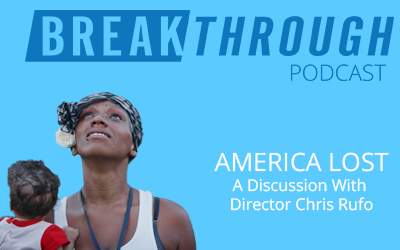
by Georgia Center for Opportunity | Jun 15, 2020
Georgia made national headlines after Tuesday’s primary elections. Most of the coverage focused on long lines, mail-in ballots, new voting machines, and results that were not finalized until the wee hours of the morning. (In fact, some results are still pending).
There were some high profile contests, including a couple of congressional races. Every member of Georgia’s General Assembly (except, of course, for those retiring) were also on the ballot.
But there was one outcome of Tuesday’s election that you’ve likely heard nothing about.
Both parties have the ability to put non-binding referendum questions on their respective primary ballots. While the results of these questions have no force of law, it is a great way to test voter opinion on various policy ideas. The results are far more accurate than a poll and can help parties and candidates understand the will of the super voters among the electorate.
This year, Republicans included the following as ballot question #1: “Should Georgia lawmakers expand educational options by allowing a student’s state education dollars to follow to the school that best fits their needs, whether that is public, private, magnet, charter, virtual or homeschool?”
The results were overwhelming: as of this writing (results are still coming in), more than 73 percent of voters said “yes.” In fact, the question had majority support in every single one of Georgia’s 159 counties, destroying a common narrative that rural voters don’t support school choice. In all but 12 counties, support was over two-thirds. In many cases, the ballot question will ultimately receive more support than the Senate or House member representing the district.
You might be tempted to argue that this only speaks to support for educational options among Republicans. And while the Democratic Party of Georgia didn’t include this question on their primary ballots, making an apples-to-apples comparison impossible, other polling in the state consistently shows support for school choice among all Demographics—Republicans, Democrats, rural, urban, young, old, men, and women.
Even an AJC poll, worded in such a way as to be biased in the negative, found that 61 percent of voters supported school choice, even when warned that it might “undercut public school funding.”
During the COVID-19 pandemic and resulting school closures, many families were forced into alternative ways of schooling for the first time ever. Families’ experience with how traditional public schools handled the shift to distance learning was mixed and inconsistent. Some schools and teachers excelled, ensuring students did not lose out on learning. Others threw their hands up early, and kids have suffered.
In the aftermath of these experiences, and in light of all the uncertainty facing a reopening of traditional public schools in the fall, many families have begun searching for alternatives–virtual education programs, private schools, and innovative public charter schools.
But will public policy change to support these students who need something outside of the traditional model of education? So far, CARES Act relief has focused millions of dollars to the state Department of Education, local districts, and traditional public schools. Nothing to date has been offered to families whose students fell behind, need to play “catch-up” over the summer, or need a different environment when school returns in the fall.
If legislators and state leaders are paying attention, that should change.
In recent years, there has been a reluctance on the part of legislators to expand existing school choice programs or create new ones. Usually, the argument goes that it will not be politically expedient to do so.
Legislators might be dismissive of polling, but if they ignore actual voters who went all the way to the end of the ballot and chose to say “yes” when asked if money should follow the child to the best school for them, it could ultimately be at their own peril.
Now that voters have spoken—clearly and specifically—how will legislators respond? Will they listen to the will of those who elected them? Elected officials (or those who wish to be elected in the future) have the ultimate opportunity for a win-win: they can give kids the educational opportunities they need and deserve while giving voters what they support and demand.

by Buzz Brockway | Jun 9, 2020
The Georgia Department of Education (DOE) last week released guidance for local Boards of Education to consider as they develop plans for the 2020-2021 school year. “Georgia’s Path to Recovery for K-12 Schools” (www.georgiainsights.com/recovery.html) does not issue mandates to local school systems, but rather guidance, expecting that situations on the ground will be different in different parts of Georgia. This requires locally elected School Board members to take the lead and chart a clear reopening plan for their schools. Additionally, leaders of Georgia’s private schools could refer to this document when considering how best to bring students back to campus.
Parents need to see clear, easy to understand plans to give them comfort that their children will be safe, and in an environment where they can learn. Teachers need guidance on how best to prepare for the upcoming school year. Teachers also need to know what gaps developed in their student’s education during the shutdown. Students and teachers were forced to adjust to remote learning on the fly as the COVID19 pandemic swept across the country. Some thrived in the online environment. Others did not. A lot is riding on the 2020-2021 school year. School leaders and local Boards of Education have an important task in front of them.
The DOE document contains two main items. First schools and school systems should determine if their community has substantial, minimal/moderate, or low/no spread of COVID19.

What constitutes substantial, minimal/moderate, or low/no spread is not explained. Admittedly, defining these terms is difficult, however, the lack of definition creates the possibility that what one local school system considers substantial spread, another considers low. School Leaders and Local Boards of Education need clarity on what these levels of spread mean.
Once a school or school system determines which level of spread exists in their community, DOE provides guidance on what the school day might look like for schools in the various spread levels.

Areas of the state with substantial spread are encouraged to exclusively use a distance/remote learning model. Education could be delivered by the school or via the Georgia Virtual Academy (www.gavirtuallearning.org), or a combination of both. Clearly internet access will be very important in delivering distance/remote learning. Schools will need to tackle this issue head-on for students with limited internet access.
In areas with minimal/moderate spread, a student’s school day could consist of the distance/remote model, the traditional model, where a student is in the classroom with live lectures by their Educator, or a hybrid model with distance/remote learning at certain times, and traditional classroom learning at other times.
For students in a school where the spread is considered low, their school day would be largely as it was in the days before COVID19. Except perhaps with certain precautions like social distancing, facemasks, and extra cleaning of the school facilities.
Additional detail on these two main items, including suggestions for dealing with a new COVID19 infection, can be found in the complete guidance document (link above).
An additional challenge for schools and school systems reopening plans is understanding the mood of parents. Will parents feel safe sending their children back to school? Crafting detailed plans for what the school day will look like, what precautions will be taken to reduce the chance of infection, and what protocols are in place should a student or adult become infected, will be of paramount importance.
A glimpse into what parents in one part of Georgia are thinking can be found in a survey conducted by Forsyth County Schools. 12,350 people (approximately 75% of whom were parents not employed by Forsyth County Schools) responded to the question “What is your comfort level with students returning physically to school in August?”
42 percent were either extremely or very comfortable with students physically returning to school in August, while 39% were slightly or not at all comfortable. Another 19% were moderately comfortable. Forsyth County Schools has not issued a definitive date for reopening. It would seem parents need to feel more confidence in the school environment before schools reopen in Forsyth.
Giving the rapid pace of change in regard to the COVID19 pandemic, schools and school systems would be wise to prepare for many different scenarios and develop many trusted sources of information to make decisions. Clear and regular communication with parents will be crucial to increasing parent’s comfort level in sending their child off to school.
https://www.forsyth.k12.ga.us/cms/lib/GA01000373/Centricity/Domain/28/4th%20Quarter%20Online%20Learning%20Survey%20-%20Final%20Results.pdf

by Corey Burres | Jun 3, 2020
A statement on current events affecting our communities
Our hearts are broken by the events of the last few days. We struggle to make little sense of the tragic and unnecessary deaths of George Floyd, Breonna Taylor, Ahmaud Arbery, and the many other stories told and untold.
In tragedy, we are reminded of the value of all humans. That each person deserves the opportunity to flourish. An opportunity that entire generations and communities are prevented from accessing.
We now must face the challenge of who we will be in light of the struggles of those around us. How will we respond to these systemic barriers? How will we address the injustices around us?
As an organization, we stand with the many communities who face these injustices. We are committed to listen, to learn, and most importantly, to act.







